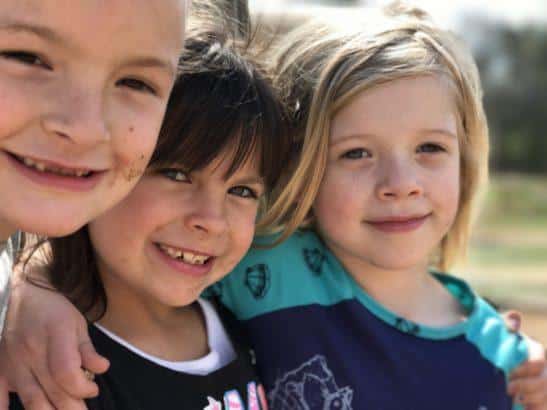Report Ranks Georgia 42nd In Child Well-Being Indicators
Print This Post
A leading children’s advocate in Georgia noted that in 2016, the child poverty in the state fell below 25 percent for the first time since the recession.
By Erica Hensley • June 13, 2017
A report released Tuesday ranks Georgia 42nd in overall child well-being for the second year in a row.
The annual Kids Count report from the Annie E. Casey Foundation compared state data from 2010 to 2015 based on four factors: children’s economic well-being, education, health, and family and community.
Georgia improved in rank with regard to the first two factors, but fell in the latter two. The report noted that the state has higher rates of children without insurance and living in poverty, compared to national numbers.
Nationally, the report notes that while childhood poverty can be found among all ethnicities, racial disparities persist — African-American children are three times more likely to live in poor families than their white classmates.
“When young children grow up in poverty, they are at high risk of experiencing difficulties later in life — having poor physical and mental health, becoming teen parents, dropping out of school and facing limited employment opportunities,’’ the report says. “African-American, Latino and American Indian children are at far greater risk of these negative outcomes than their white or Asian-American peers.”
The Annie E. Casey Foundation is a Baltimore-based private philanthropy aimed at improving childhood risk factors that hamper educational, economic, social and health outcomes.
Geographically, states in New England and the Midwest fared well, with New Hampshire, Massachusetts, Vermont, Minnesota and Iowa ranking highest. Sunbelt states — Arizona, Nevada, Louisiana, New Mexico and Mississippi — were at the bottom of the list.
Nationally, 95 percent of kids have health insurance, compared to 85 percent in 1997.
Georgia lags slightly behind the national number with 7 percent of kids lacking health insurance, improving from 10 percent uninsured in 2010.
Access to health care has far-reaching implications, said Rebecca Rice, Georgia Kids Count Manager at Georgia Family Connection Partnership (GAFCP), a public-private partnership that helps communities improve child and family well-being.
“We want kids to go to the doctor, and the data show that kids do better when they get the health care they need,” Rice told Georgia Health News. “Healthy kids are going to do better in school and be better prepared for the workforce.’’ Health, education and economic well-being, she said, “are so intertwined and you can’t consider one area without the other; they don’t exist in a vacuum.”

Despite the statistics in the latest Kids Count report, children’s advocates in Georgia have noted some positive developments. “We have improved in most areas,” said Polly McKinney of Voices for Georgia’s Children.
Credit: Andrew Park
Overall, Georgia ranks 38th in children’s health. The number of child and teen deaths in the state has increased, spiking to 777 from 687 in 2014. Fewer babies are being born in Georgia with a low birthweight, but at 9.5 percent of all births, the rate is higher than the national average of 8.1 percent.
Both areas need targeted community-level intervention, said Rice.
Polly McKinney, advocacy director at Voices for Georgia’s Children, said state agency reforms have come a long way in understanding the complexities of families and children in the welfare system, and how to approach systemic change to help those families.
McKinney said rankings can often be relative and shouldn’t be interpreted as definitive indicator of the state’s progress.
“We have improved in most areas,” she said. “We’ve had a pretty nice run the last six years with child-serving government agencies, as well as nonprofit and private stakeholders, working together, and we are now seeing the data.”
McKinney said the spike in child and teen deaths is troubling, and should jump-start what are often seen as difficult conversations about suicide prevention. She said Gov. Nathan Deal’s newly formed children’s mental health commission is a step in the right direction to address what is shaping up to be Georgia’s worst year on record for child and teen suicides.
“Suicide cuts across all kinds of families and socioeconomic lines — it’s very real, it’s happening and it’s preventable,” McKinney said. “We need to talk about it in a more honest and helpful way.”
The Atlanta Journal-Constitution recently reported that suicide is the second-leading cause of death for 15-to-17-year-olds in Georgia, behind car crashes.
Overall, Georgia ranks 34th among states in child education. The rate of Georgia children not attending preschool remains steady at 50 percent, even as poverty rates have increased. Twenty-one percent of Georgia high school students failed to graduate on time, which is an improvement, but higher than the national rate.
Rice says gains in education are partially due to GAFCP’s Get Georgia Reading campaign, which focuses on community-specific needs. Though math and reading proficiency have improved in Georgia, math skills lag behind reading, a situation that mirrors the national trend.
The state ranked 41st in the family and community category. The rate of births to teenagers decreased to 26 per 1,000, down from 41 in 2010, but is higher than national rates. There was a sharp increase in the number of children living in high-poverty areas, from 14 percent in 2010 to 17 percent in 2015, part of a national increase not unique to Georgia.
Erica Hensley is a freelance writer based in Athens.
Read the story on wabe.org.
